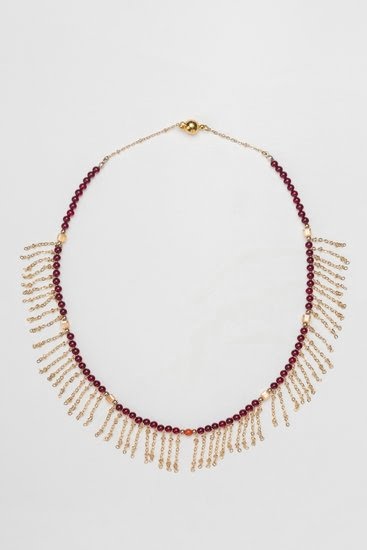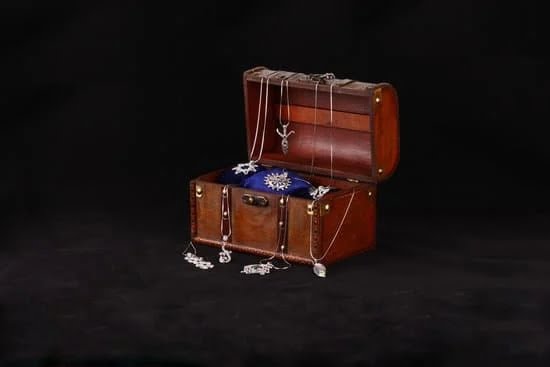Introducing the Choices
Sterling silver and stainless steel are two of the most popular metals used to create jewelry. Both materials differ in their characteristics, making each one suitable for different types of jewelry pieces. Sterling silver is an alloy composed predominantly of silver, combined with other elements such as copper and zinc. It is a softer metal known for its bright, silvery finish and malleability. Stainless steel is an alloy that mixes iron with other elements such as chromium and nickel. It offers superior resistance to corrosion and tarnishing and is better suited to items such as watches and wedding bands.
When we look at durability, stainless steel wins this factor by a large margin since it is much stronger than sterling silver due to its high iron content. This makes it ideal for creating bracelets or rings that will be worn frequently where increased strength is desired. Jewelry made with sterling silver can easily bend or scratch if worn often, which limits its range of applications when compared to stainless steel.
Stainless steel also has a higher melting point than sterling silver, meaning it will not corrode when exposed to heat like lighter metals do – making it more reliable in terms of longevity and quality control techniques during manufacturing processes. On the downside, sterling silver does have an advantage when it comes to cost as it generally costs less than stainless steel depending on the products chosen; however there are slightly more expensive grades of either material available for those looking for higher-quality pieces without breaking the bank.
Overall both materials are equally valuable when looking at their pros and cons especially within the production of jewelry pieces. Ultimately, it really just depends on what type of design you want in your piece: a more stylish finish may lean towards sterling silver while a lightweight but durable option may lead you to stainless steel products instead.
Analyzing the Physical Properties of Sterling Silver
Sterling silver is an alloy made from 92.5% pure silver and 7.5% of other metals, like copper, nickel or zinc. It has a beautiful silvery white color and is malleable and ductile — meaning it’s easy to work with, shape and bend. Sterling silver is strong enough to stand up to regular wear in jewelry, but it can be scratched more easily than stainless steel. To keep sterling silver jewelry looking bright, you should clean it regularly using a polishing cloth and store it carefully away from sunlight to prevent oxidation or tarnishing.
Analyzing the Physical Properties of Stainless Steel
Stainless steel is composed of iron, chromium (about 11-30%),carbon (about 0-1.2%), manganese, silicon and sometimes nickel and molybdenum depending on the grade of stainless steel being used. Its strength is far greater than sterling silver while its resistance to corrosion makes it a popular choice for jewelry making. Stainless steel also contains fewer dyes than sterling silver which makes it hypoallergenic – ideal for sensitive skin types who might get irritated by other materials such as sterling silver or gold plating/fillings. One downside of stainless steel is that there are many different grades available (304L & 316L are among the most common) where each type carries its own good points and bad points depending on usage so make sure you choose the correct type for your project!
When making a decision about which metal to use for jewelry, personal preference often plays an important role in the decision process; however, physical properties should also be taken into consideration when deciding between sterling silver or stainless steel for jewelry making purposes. For those seeking beauty, sophistication and strength in their pieces then sterling silver might be preferable due to its softer look but with regular cleaning will maintain a silvery sheen over time. On the other hand, if ultimate durability is desired then stainless steel can offer maximum impact resistance due its robust composition whilst also containing few allergenic components that may irritate highly sensitive skins types who may find wearing conventional pieces uncomfortable or impractical.
Investigating the Unexpected Benefits of Stainless Steel
When considering the best material for jewelry, two that often come up in conversation are sterling silver and stainless steel. Both metals have their advantages – it’s important to consider which is most suitable for your needs objectively. In terms of durability, stainless steel is far superior to sterling silver as it has a higher resistance to scratches and discoloration. Additionally, stainless steel does not tarnish like silver over time, so its color and luster remain for much longer. It is naturally corrosion resistant, so it will last for years even with everyday wear. Another great benefit of stainless steel is that it is hypoallergenic and safe for sensitive skin types; those with allergies can confidently wear jewelry made from this metal without fear of irritation or adverse reaction. Silver is a popular choice because it can be heavily detailed and styled with intricate designs without losing its quality or shape. While fairly durable on its own, silver may require more maintenance if worn every day as it is prone to scratching as well as discoloration if not properly cared for. Ultimately, both sterling silver and stainless steel provide quality materials for jewelry-making which can elevate an outfit with style and sophistication but if you’re looking for something long lasting and safe then stainless steel should be your go-to choice!
Examining How Durable Each Metal is
When it comes to jewelry, the most popular metals used are Sterling silver and stainless steel. Both of these metals have become commonplace in modern jewelry due to their attractive appearance, durability, and cost effectiveness. However, when it comes to longevity, what metal is best? To answer this question you need to analyze the long-term benefits of each metal.
Sterling silver is a popular choice among those seeking jewelry with a classic look. Silver is soft and malleable so it can be worked into intricate pieces with little effort. Furthermore, it develops a patina over time that many people find attractive which adds character and depth to any piece. The downside of sterling silver is that it quickly tarnishes if not properly cared for, meaning regular cleaning and polishing is necessary to retain its shine for years on end.
Stainless steel may be cheaper than sterling silver but its endurance far outweighs the money saved upfront. It’s highly resistant element will last longer without tarnish or rusting when properly cared for, ensuring it won’t lose its luster in time like sterling silver does. In addition, stainless steel is a harder material that won’t dent or scratch as easily as silver making it ideal for those who use their jewelry everyday. On the other hand, stainless steel offers fewer customization options compared to sterling silver since it cannot be worked in the same way — though often there are already designs available in stores that meet your needs.
At the end of the day both types of metal have positives and negatives depending on who they are intended for; before deciding which one best suits you consider your lifestyle and aesthetic preferences then determine what quality you prefer more: long term beauty or long-term durability?
Examining the Different Cleaning Methods and Care Requirements
When it comes to choosing the material for jewelry, there are two clear contenders: sterling silver and stainless steel. Both materials have different levels of durability and shine, not to mention their various uses in fashion. Sterling silver offers a jeweler the ability to craft beautiful intricate designs that won’t corrode whereas stainless steel is known for its strength, versatility and affordability. When making a decision on which material will be better for your jewelry piece, consider the anti-tarnish properties, cleaning methods, and care requirements associated with each material.
Sterling silver requires some special attention when caring for it due to its oxidation-prone nature. To keep it in good condition, you should keep silver jewelry away from harsh chemicals and store it in an airtight container when not being worn. In addition, the tarnish can be easily prevented with a quick rubdown with a simple home solution that consists of water and baking soda or soaking them overnight in an aluminum foil filled bowl full of warm water mixed with baking soda or vinegar. When cleaning sterling silver jewelry regularly use only gentle solutions such as liquid soap diluted with water or professional cleaners designed specially for sterling silver products.
On the other hand, when it comes to stainless steel all you need is just a wipe down with a damp cloth or mayonnaise if needed, to remove dirt and debris stuck on the surface. It is important to note that colored stainless steel should not be wiped down excessively using soft rags as this could cause discoloration. Treating stainless steel jewelry with care isn’t difficult; simply remember not to use any harsh chemicals like ammonia because this might cause damage to its finish over time.
Whether you choose sterling silver or stainless steel for your jewelry piece both materials require special care and attention in order to stay looking pristine for longer periods of time so consider this before making a purchase decision as well: Factors like price point as well as how often you would wear it should also play into your decision-making process if given the choice between one material over another
Answering the Question
Trying to decide which metal is best for jewelry can be tricky. Depending on personal preference, lifestyle and budget, either stainless steel or sterling silver could be a good choice.
Sterling silver jewelry is often preferred because of its luxurious look and can be plated with other metals in order to achieve different colors or designs. It is also more malleable than stainless steel, allowing it to be designed into intricate shapes. However, sterling silver cost more upfront and requires regular cleaning and polishing in order to maintain the luster of the metal. Additionally, it may cause an allergic reaction in some people who have sensitivities to metals.
On the other hand, stainless steel jewelry is often considered to be more practical because it doesn’t require as much upkeep. It’s resistant to tarnishing and corrosion and also doesn’t cause allergic reactions since it does not contain nickel like many other metals do. Moreover, stainless steel is stronger due to its composition which makes a great choice for everyday wear jewelry that won’t easily break. The only downside here is that the color cannot be modified but fashion-wise there are still plenty of designs that can make stainless steel jewelry stylish.
Ultimately, both sterling silver and stainless steel make great options for jewelry as each metal possesses unique characteristics and benefits for wearers. Having knowledge about both metals’ properties will help you choose the one that works best for your needs and preferences.
Why Quality Matters when Investing in Jewelry Pieces
When deciding which material to choose for your jewelry pieces, quality should be one of the top considerations. Sterling silver and stainless steel are both popular options for making pieces such as rings and necklaces, but each has its own advantages and disadvantages.
Sterling silver is a precious metal, which means it’s more valuable than materials like stainless steel. It also looks much more luxurious and can be designed into intricate shapes and structures that wouldn’t possible with most other metals. The downside is that sterling silver will tarnish over time if it isn’t cared for properly. This can cause it to lose some of its shine and soft appearance which makes it less desirable than when it was first purchased.
Stainless steel offers a trendy look without the worry of tarnishing, as it is made of an alloy composed mainly of iron, chromium, and nickel. It will last much longer and require fewer repairs in comparison to sterling silver, but is considerably cheaper because there is no precious metal value attached to it. As well as being a less expensive option than sterling silver, stainless steel jewelry holds up better when exposed to moisture or sweat, so if you’re looking for long-term durability then this may be the right choice. However, stainless steel lacks the elegance that comes with opting for sterling silver pieces, meaning that you may not have the same level of design quality or intricacy compared with a high-end sterling item.
Ultimately, whether you choose sterling silver or stainless steel depends on your individual style preference as well as how much care it requires from upkeep to maintain good condition over time. Both offer great investment potential in terms of their longevity due to their strength and toughness but carefully weigh up all factors before settling on either option.

Welcome to my jewelry blog! My name is Sarah and I am the owner of this blog.
I love making jewelry and sharing my creations with others.
So whether you’re someone who loves wearing jewelry yourself or simply enjoys learning about it, be sure to check out my blog for insightful posts on everything related to this exciting topic!





